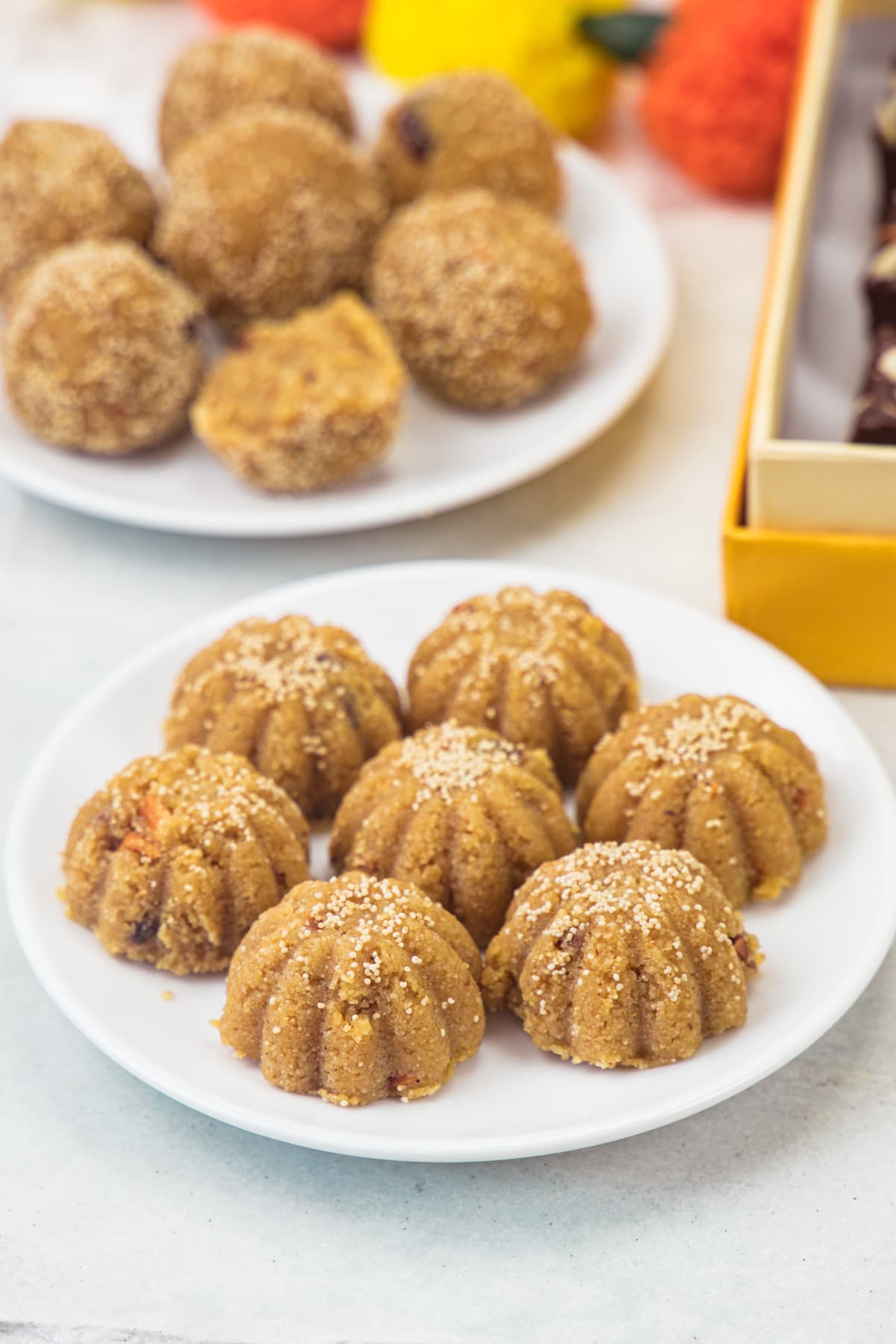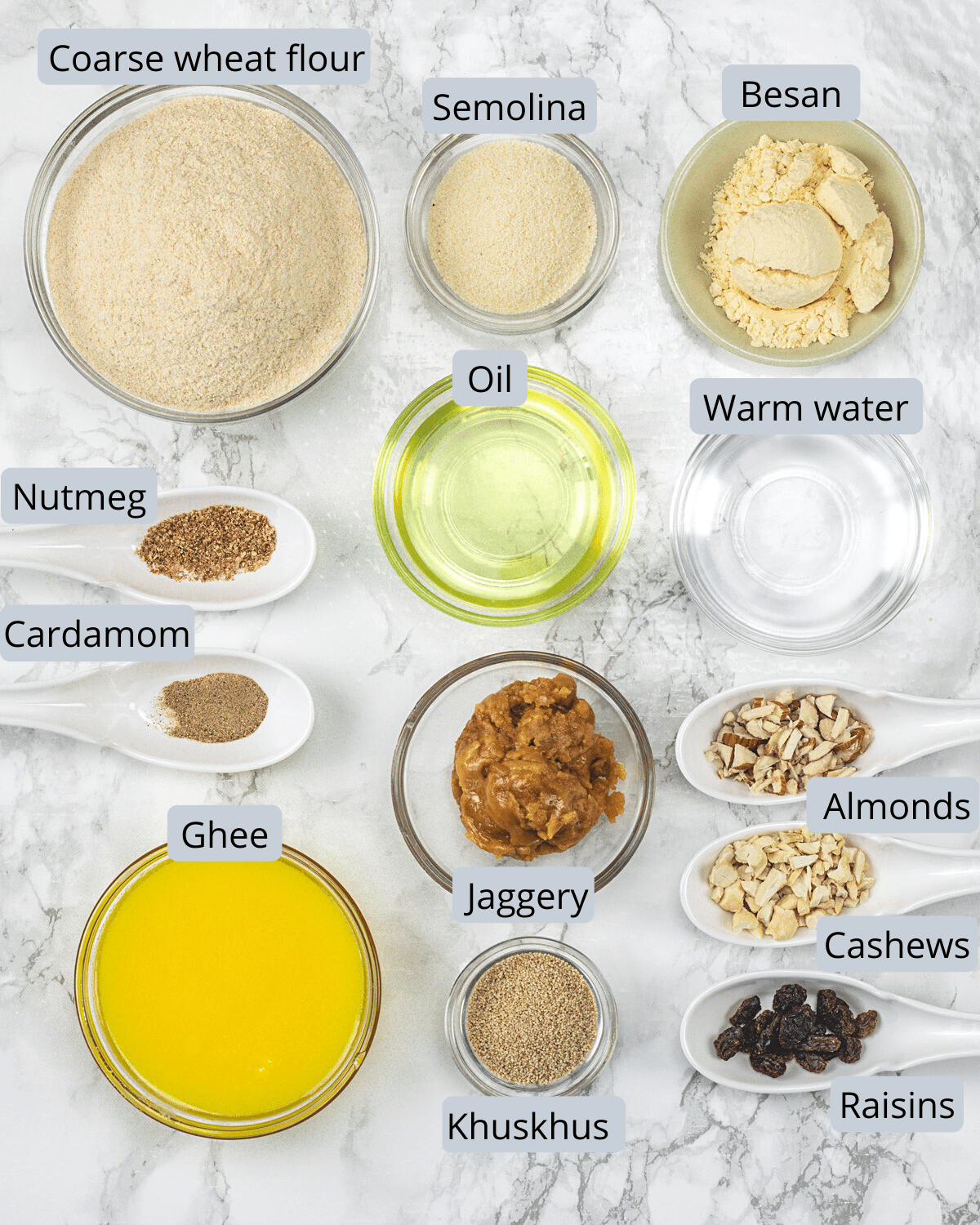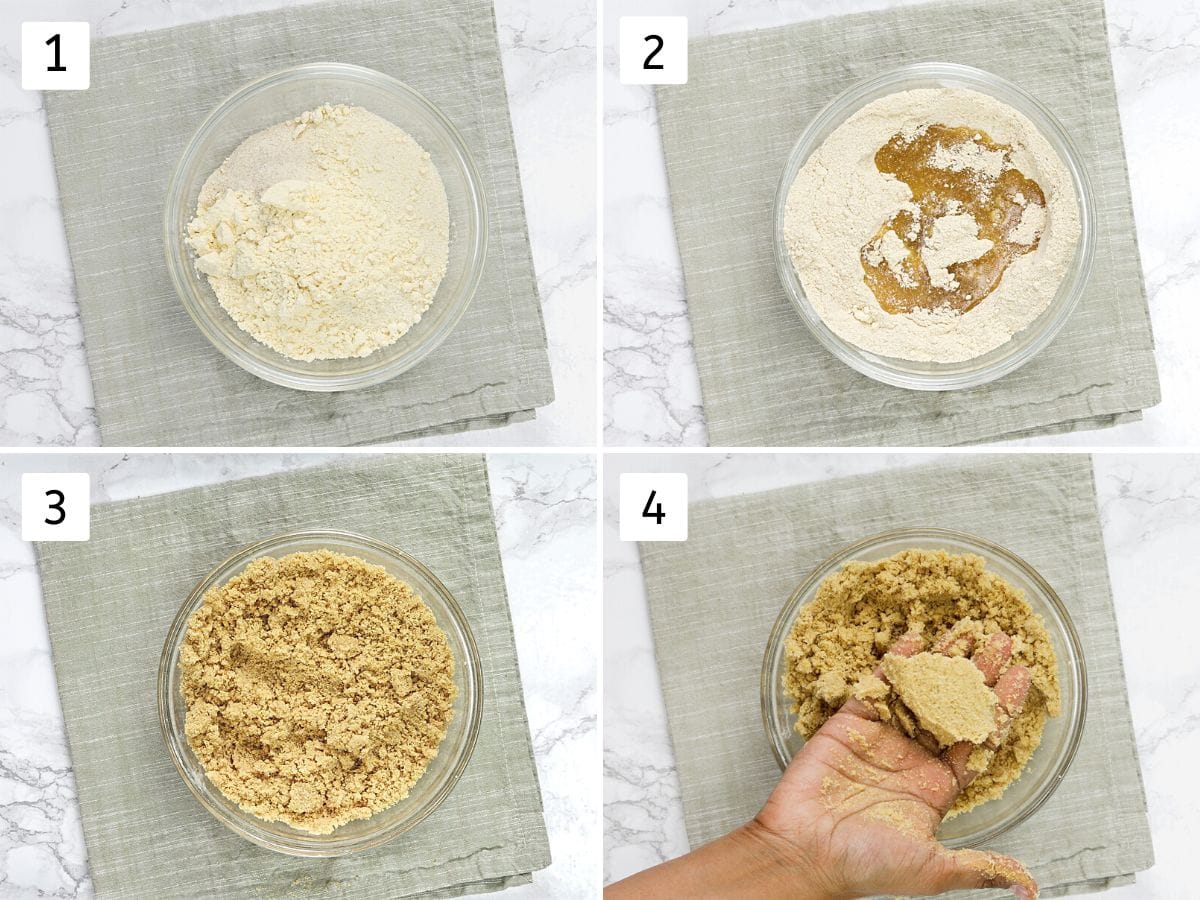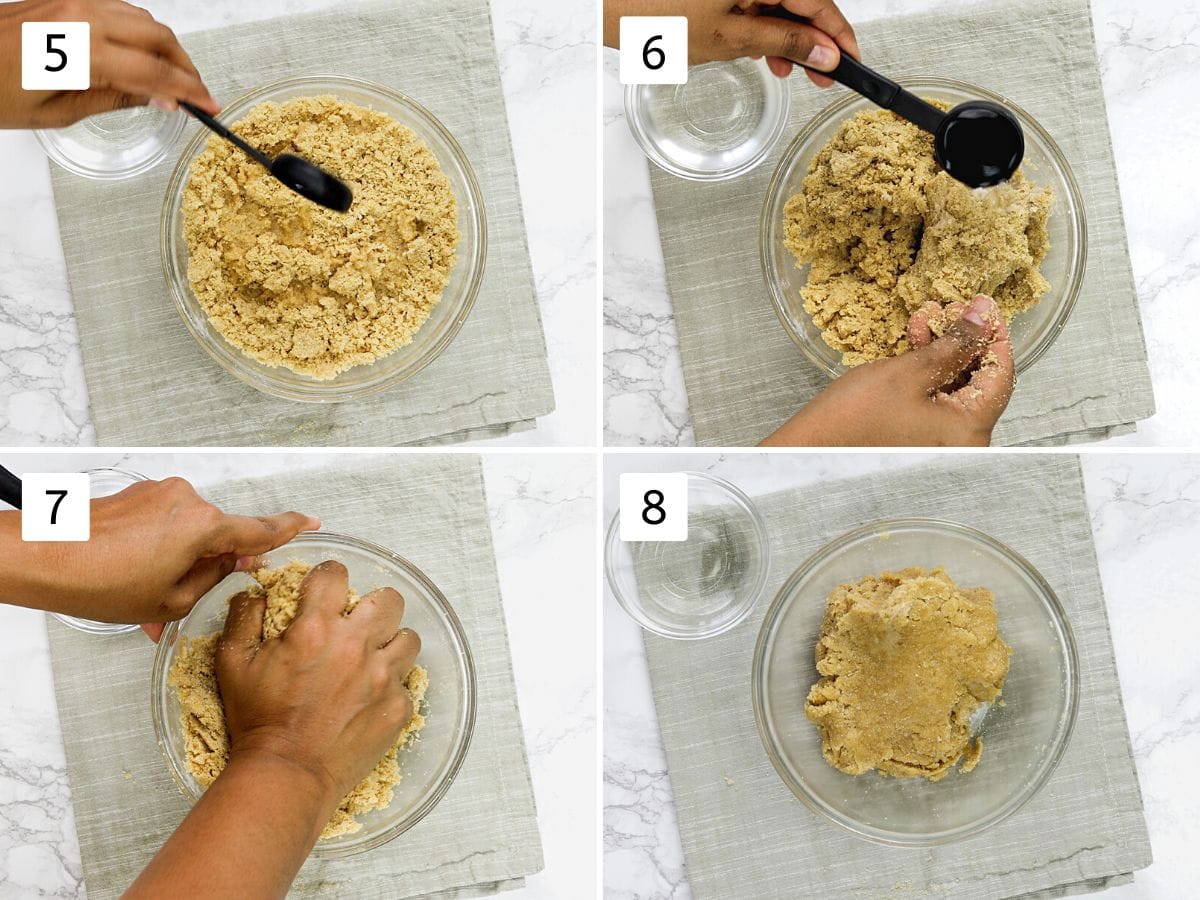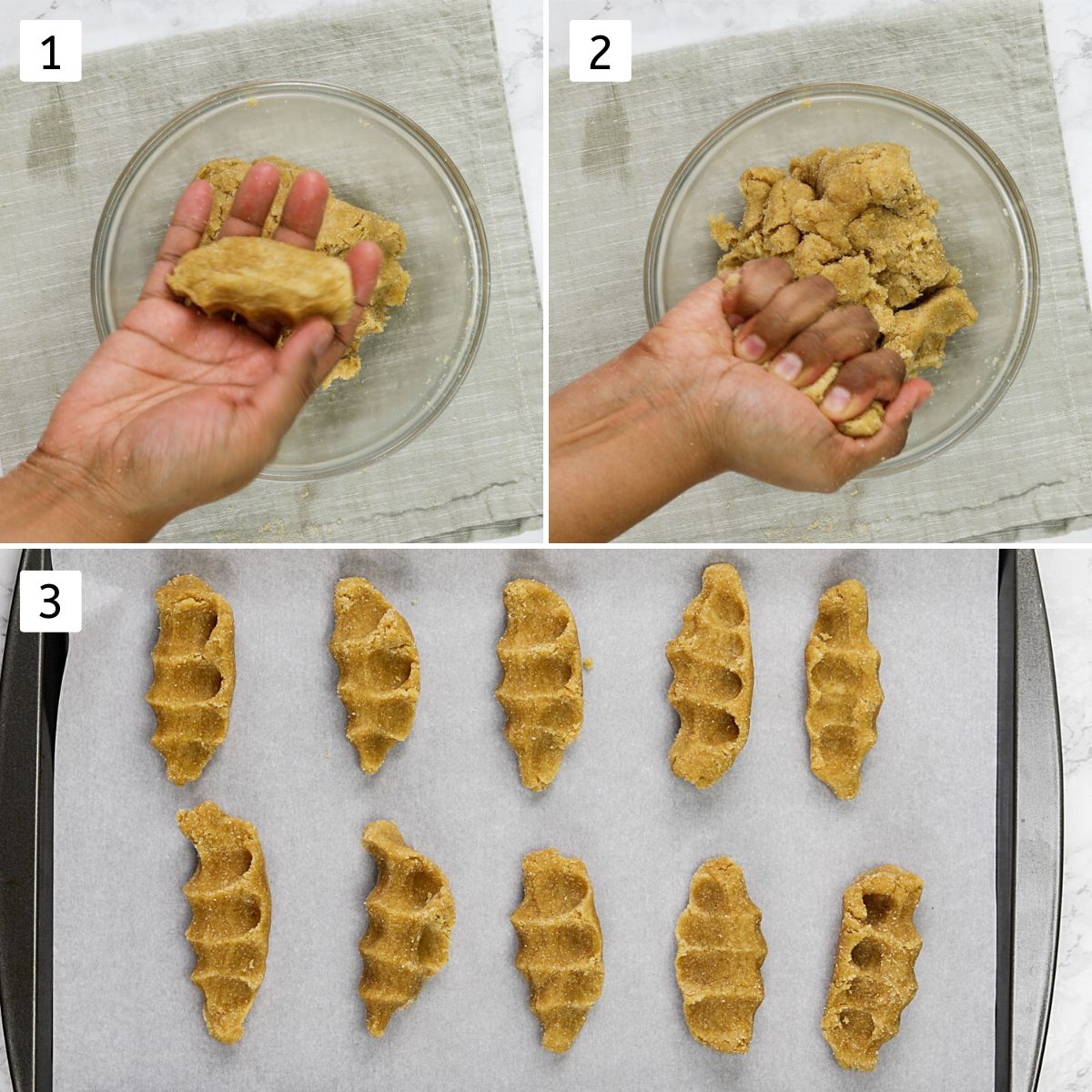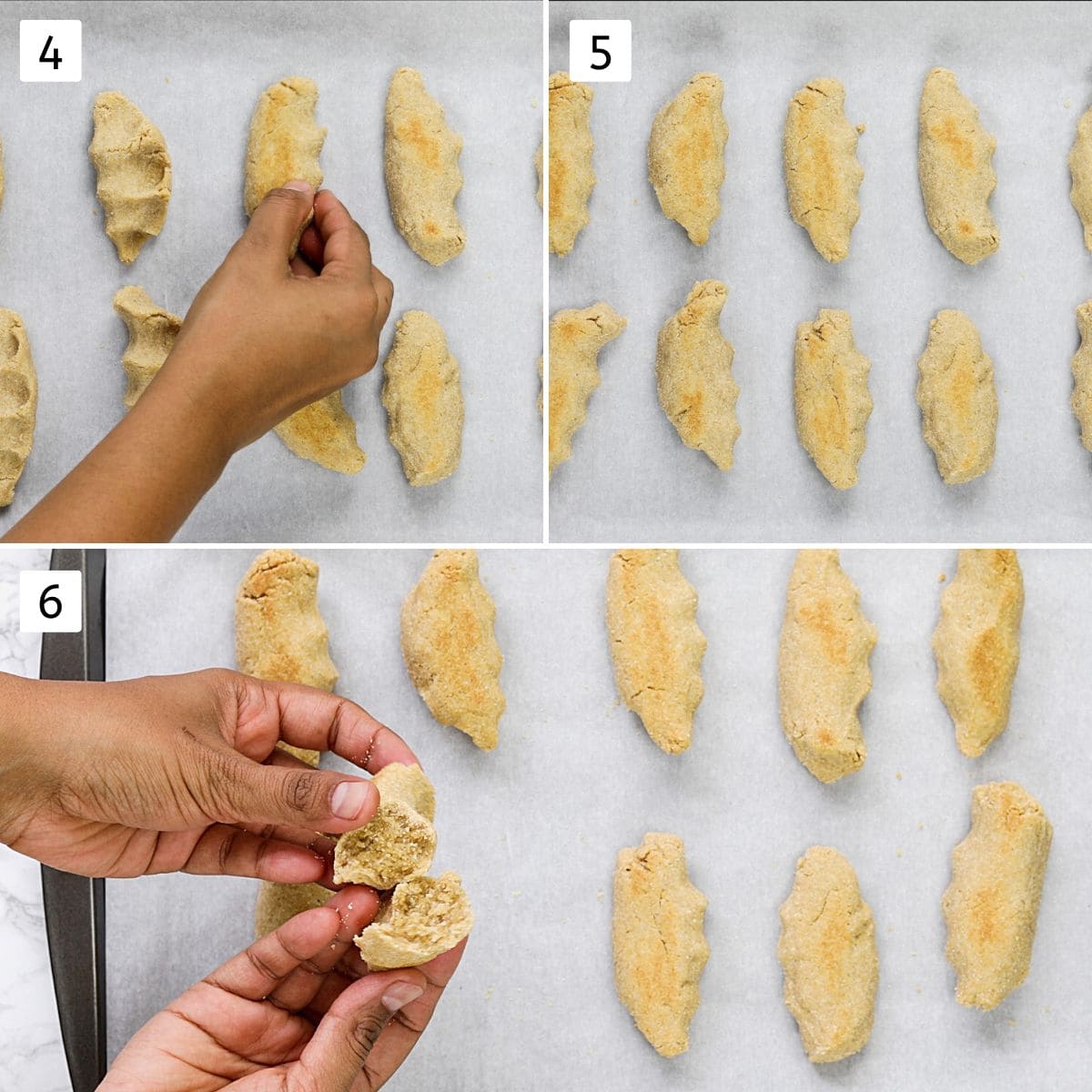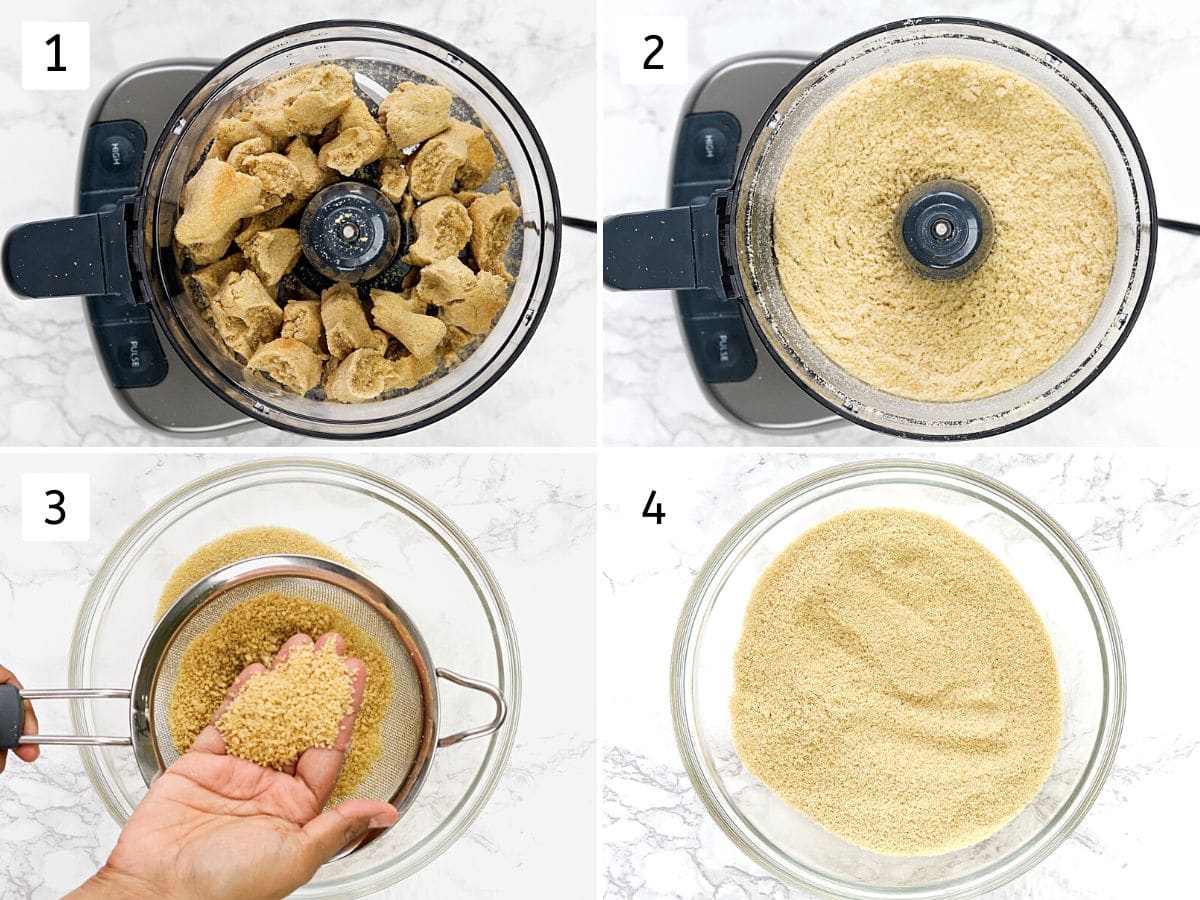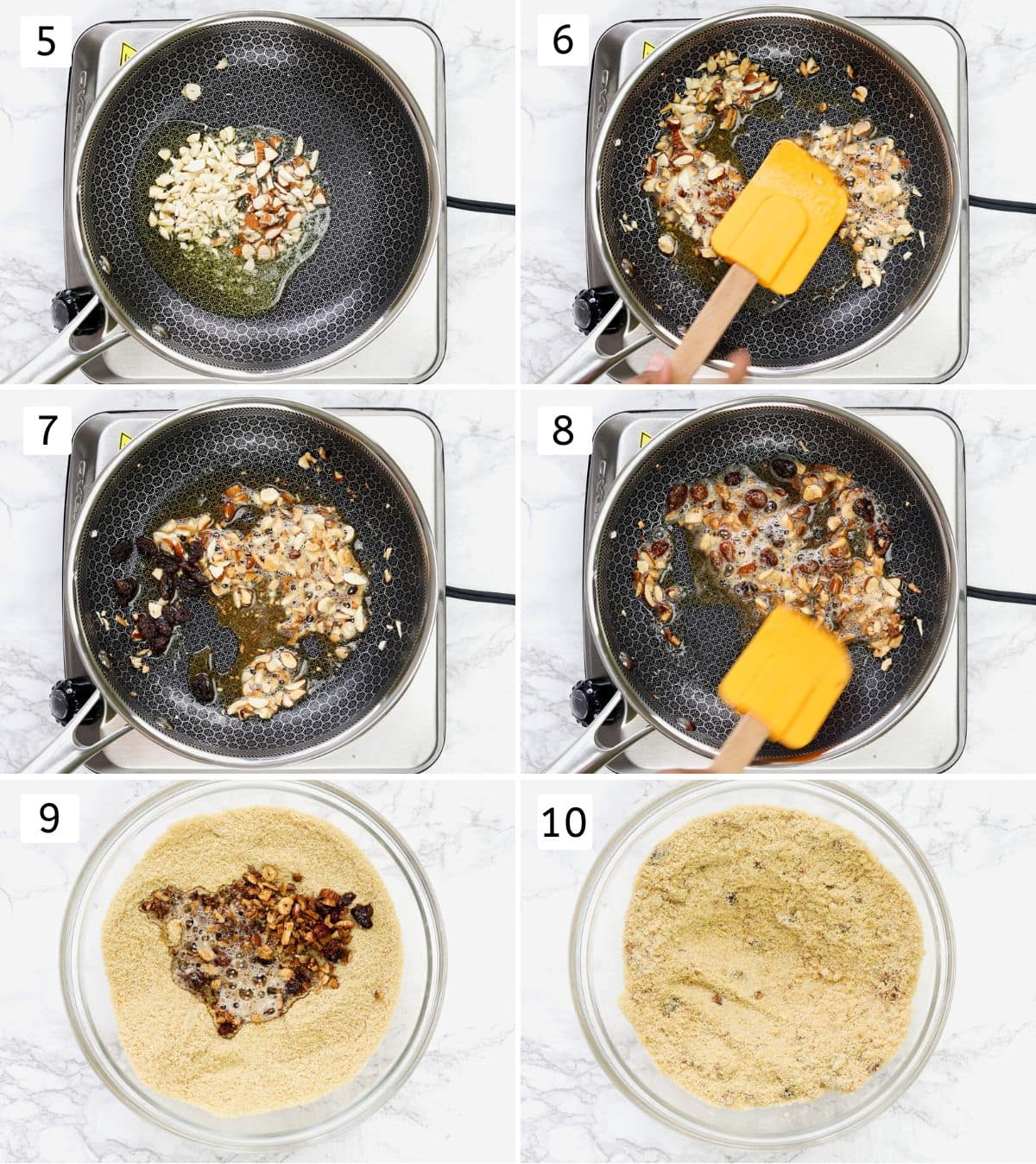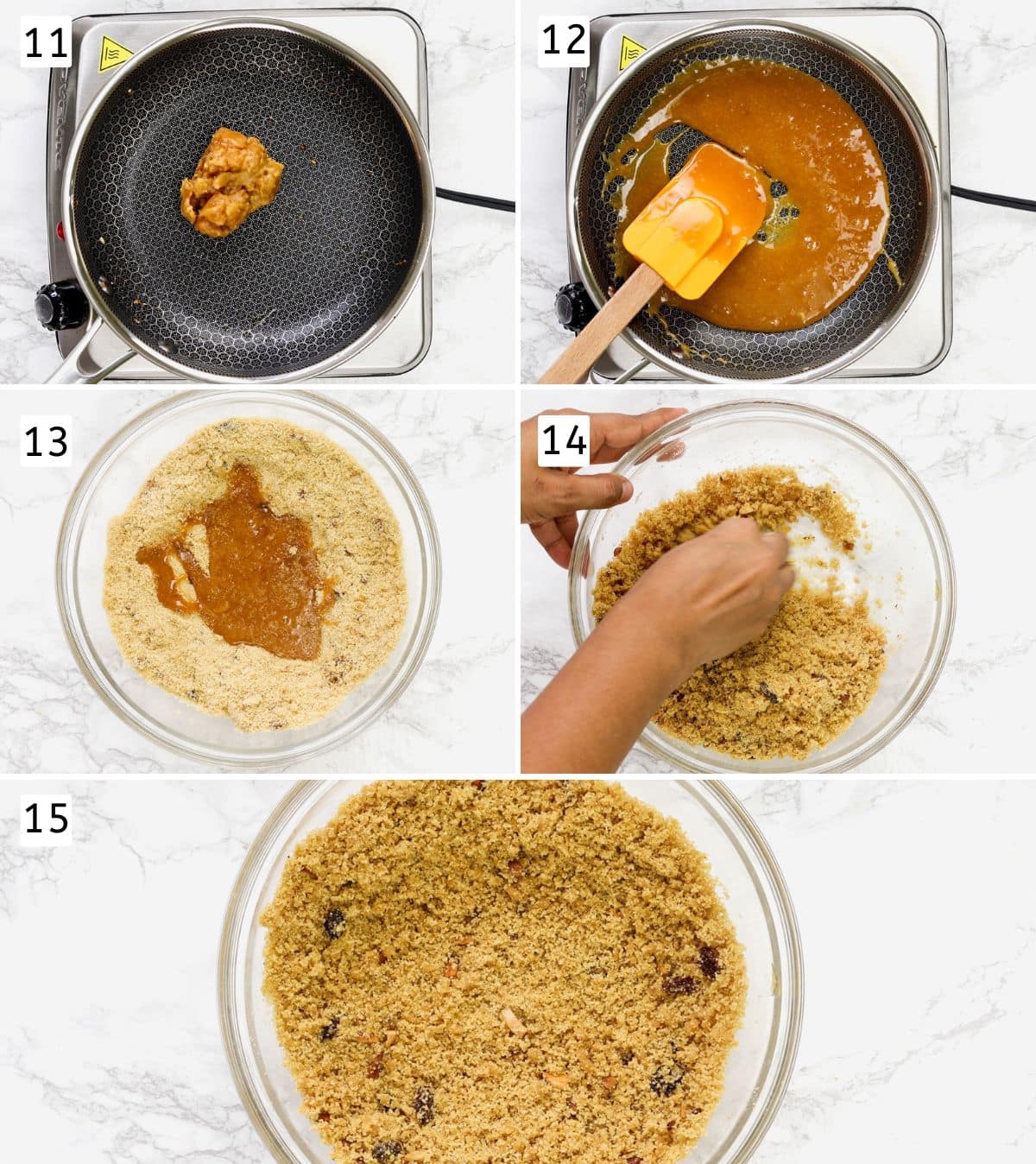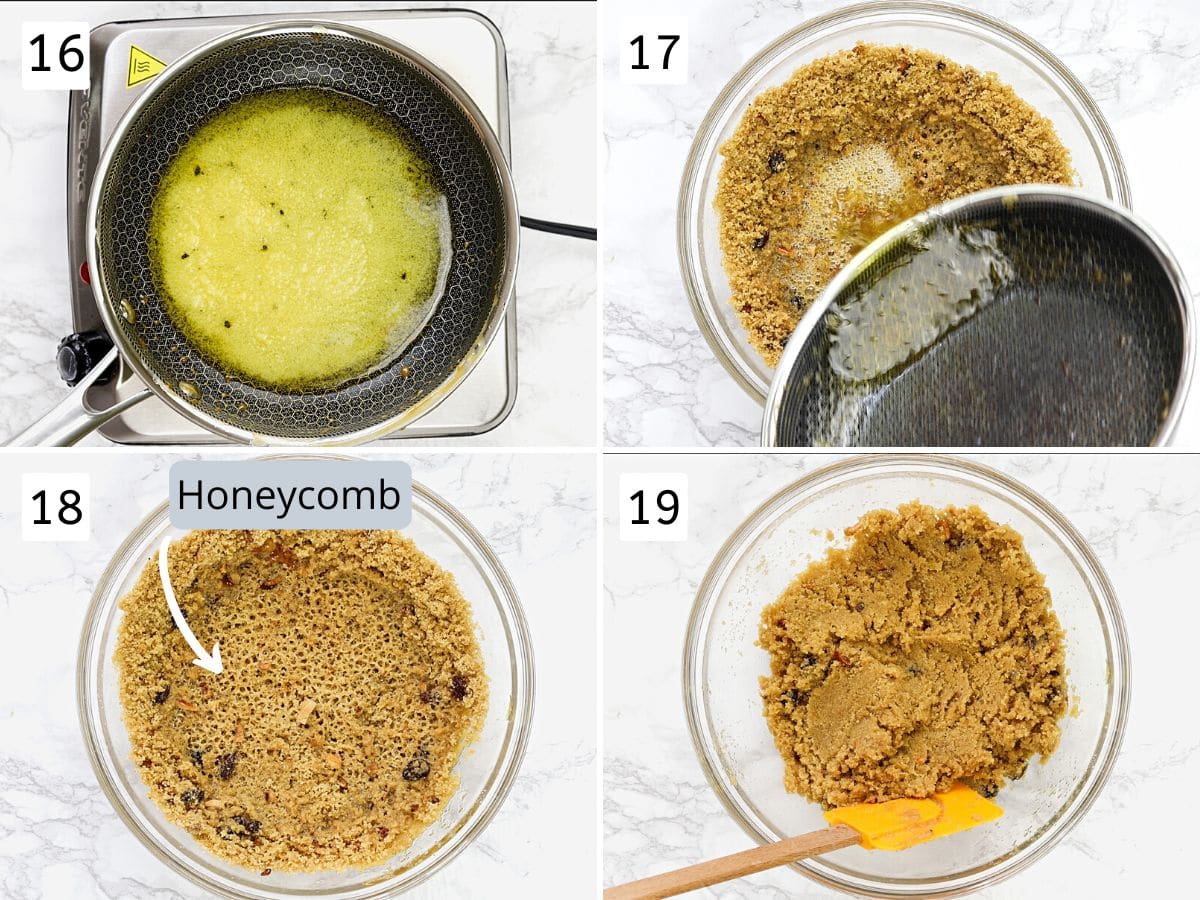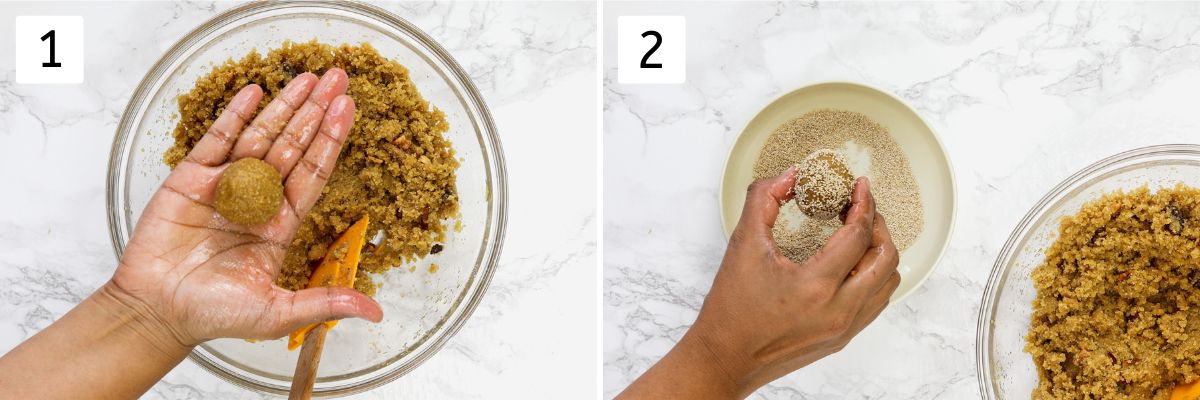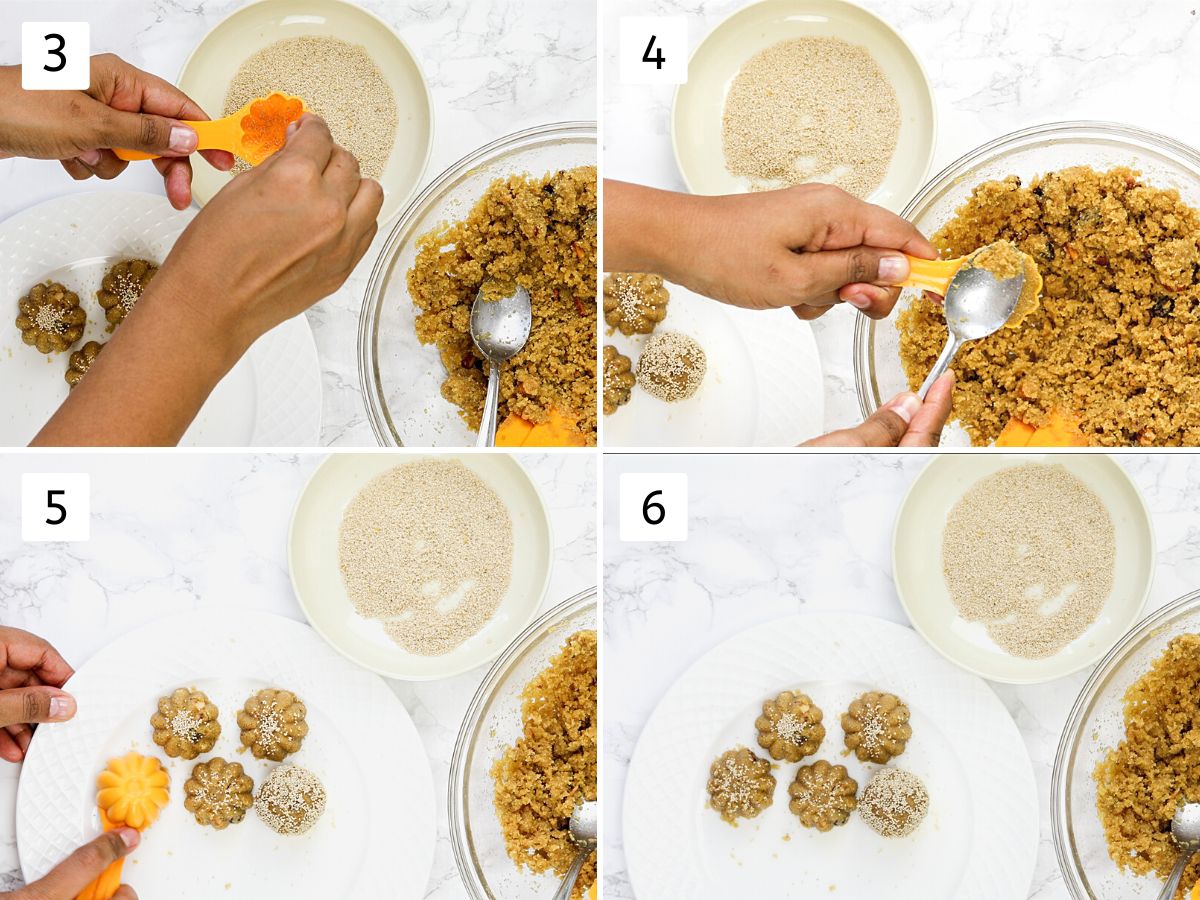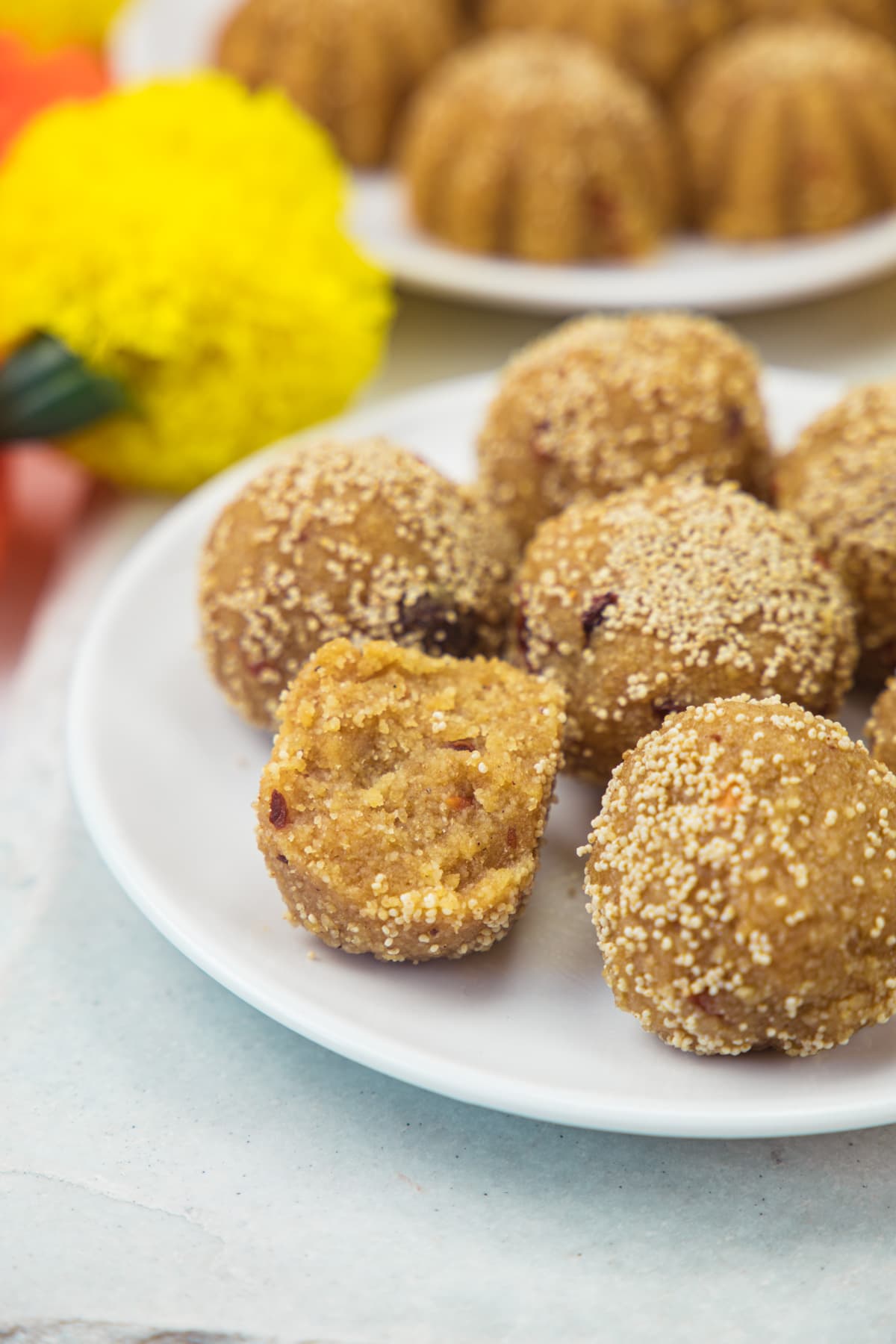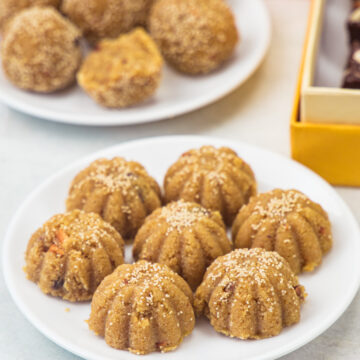❤️ About This Churma Ladoo Recipe
This churma ladoo or laddu is a traditional Indian sweet that is more popular in Gujarat and Rajasthan. In the Gujarati language, it is called ‘churma na ladva’. Rajasthani Vs Gujarati Churma Ladoo: Powdered sugar is used in Rajasthan vs Jaggery is used as a sweetener in Gujarat. Healthy snack: Because this churma ladoo recipe are made from wheat flour, jaggery and ghee with nuts and raisins, this makes a healthy, filling and energetic snack for your kids. These are packed with healthy fat, proteins, vitamins and minerals.
When Churma Ladoo Is Made?
In ancient times in Gujarat, churma ladoo is made on various auspicious occasions, weddings and funerals in form of prasad and it must be made by Brahmin women who are invited to your house. Of course, this ritual is not followed nowadays and anyone can make these delicious laddus. Nowadays in Gujarat, churma ladoo is also made during the Ganesh Chaturthi festival and it is offered to lord Ganesha as a bhog (prasad) along with many other Ganesh Chaturthi recipes. In Rajasthan, churma ladoo are made along with dal bati and churma on many festivals like Diwali, Karwa Chauth and other vrats, etc.
How Churma Ladoo Is Made Traditionally?
Making a dough: a tight, stiff dough is made from coarse wheat flour, oil and water along with a tiny amount of semolina and besan. Shaping the dough: A small portion of dough is shaped into muthia or bati with an indentation on it for quick and even cooking. Cooking the dough: Traditionally, these shaped dough portions are deep fried into the ghee until crisp. Making churma & Shaping ladoo: Once the fried dough has been cooled down, they are crushed into a powder. Then fried nuts, melted jaggery and hot ghee are added and mixed to make a ladoo mixture. Then this mixture is shaped into ladoos and garnished with khuskhus (poppy seeds).
Traditional Vs My Recipe:
My recipe for churma ladoo is made without frying. Does that mean it uses less ghee?? NO, absolutely not. Even though we are baking the shaped muthia dough, you’ll need the same amount of ghee. In the frying method, some ghee is absorbed by the dough during the frying process. So less amount if ghee is added later while making ladoo mixture. While in the no fry method, the dough is dried out once baked. So more amount of ghee is used while making the ladoo mixture. In short, churma ladoo made without frying does not use less ghee and doesn’t have fewer calories. 2 good things with my recipe: (1) no mess of frying and no worry of saving the leftover ghee (2) baking time is passive. You don’t have to babysit. While it’s baking, you can do other tasks like prepping rest ingredients or cleaning or cooking other things.
🧾 Ingredient Notes
Coarse wheat flour: The packet sometimes also says bhakri flour. It is easily available in Indian grocery stores. Semolina & Besan: a tiny amount is used here. Oil: Use any flavorless oil like corn, canola, safflower or sunflower oil. It is used as ‘moyen’ while making the dough. Warm water: Make sure to use lukewarm water (not room temperature or cold water). Nutmeg & Cardamom: Both add a nice flavor and aroma to the laddus. Jaggery: Any kind of jaggery works (desi gur, powdered jaggery or kolhapuri jaggery). Use whatever you have on hand. Nuts, Raisins: I have used almonds, cashews and raisins. Ghee: It acts as a binding agent to the ladoo. Plus, it adds a rich flavor. Khuskhus (poppy seeds): Shaped ladoo are rolled lightly into the khuskhus as a garnishing.
👩🍳 How To Make Churma Ladoo? (Pics)
Making Dough:
- Take coarse wheat flour, besan and semolina to a bowl. Mix them together.
- Add oil.
- Rub the oil and flour together between your fingers and thumb to mix thoroughly.
- If your pinch the portion of the dough together it should come together but still can crumble easily. That’s how you know that you have added enough oil.
- Then add 1-2 tablespoons of warm water at a time and start kneading into the dough.
- Add little water at a time instead of dumping altogether.
- Gather and knead the dough using the palm of your hand.
- Make a tight and stiff dough with cracks on it or around the edges. It doesn’t have to be smooth or soft. Shaping & Cooking Dough:
Preheat the oven to 350 F (180 C) for at least 10 minutes. Line a baking sheet with parchment paper and keep it ready.
- Now take a lime size of dough portion and make an oval shape.
- Now using your feast and fingers, press the oval dough firmly to make indentations. These are called muthia in Gujarati.
- Repeat the same for the rest of the dough and arrange them on a prepared baking sheet.
- Bake in the preheated oven for 20 minutes. Then flip them.
- Bake again for another 10 minutes.
- Break one and see if the inside is cooked and not raw, doughy anymore. Let the muthia cool down completely. Making Ladoo Mixture:
- Break the cooled muthia and add to the food processor jar.
- Run the processor on high until it becomes powder.
- Pass it through the sieve and crush the remaining larger granules again to make powder. Repeat the same until all the mixture passes through the sieve.
- It has to be fine yet coarse churma powder form. Add cardamom powder and nutmeg, and mix well.
- Heat 1 tablespoon of ghee in a pan on medium-low heat. Once hot add chopped almonds and cashews.
- Fry with stirring constantly until golden brown.
- Then add raisins.
- Within a minute raisin starts to plump up.
- Immediately add this to the churma powder.
- Mix well using a spoon or spatula.
- In the same pan, add jaggery.
- Stir and cook until jaggery is melted.
- As soon as it is melted, add that to the churma mixture.
- Using your fingers, mix the jaggery into the mixture.
- Spread this mixture evenly in the bowl.
- In the same pan heat the remaining ghee on medium heat.
- Ghee has to be hot. Pour that hot ghee all over the surface of the mixture. Do not dump it all in one place.
- Hot ghee will sizzle at first and then creates a honeycomb effect. That’s perfect and for that, your ghee must be hot.
- Mix everything with a spatula and let the churma mixture cool down to touch. Shaping Ladoo:
- The first shape is a regular round ladoo. Take around 2 tablespoons of portion, press it tightly into your feast and shape it into a round ladoo.
- Roll the ladoo lightly into the khuskhus.
- The second shape is done by the ladoo mold. Grease the mold’s inside surface with ghee. Sprinkle a little amount of khus khus.
- Then add the ladoo mixture and press it tightly into the mold and smooth out the surface.
- Remove it on a plate by tapping it gently. It will come out easily.
- Repeat the same for the rest mixture.
💭 Expert Tips For Making Churma Ladoo
Using coarse wheat flour (aka bhakri flour) is important to get the right churma ladoo texture. Warm water is a must to knead the dough (not cold or not room temperature). Given water amount is approximate. Always start with little water at a time and add little by little while kneading the dough. The dough has to be tight and stiff otherwise it takes longer to bake. The longer it takes, the more brown spots on the surface and that will change the taste of the ladoo. Frying method: Fry the muthia on low-medium heat. Be patient, one batch takes around 8-10 minutes (depending on the size and thickness of your muthia). Just melt the jaggery, do not simmer or cook. Ghee has to be HOT and you’ll get a honeycomb effect as soon as you pour the ghee. If your ghee is not hot enough then you won’t get honeycomb and churma ladoo mixture tastes slightly raw. Do not dump hot ghee in one place, pour that all over the surface of the mixture. Storage: Churma ladoo stays good for 10-15 days at room temperature in an airtight container. In the fridge, it stays good for longer but bring it to room temperature before serving.
Did you try this churma ladoo recipe? I’d love to hear about it! Leave a review in the comment section below.
Rava besan ladoo Coconut ladoo Boondi ladoo Rava laddu Bajra ladoo
